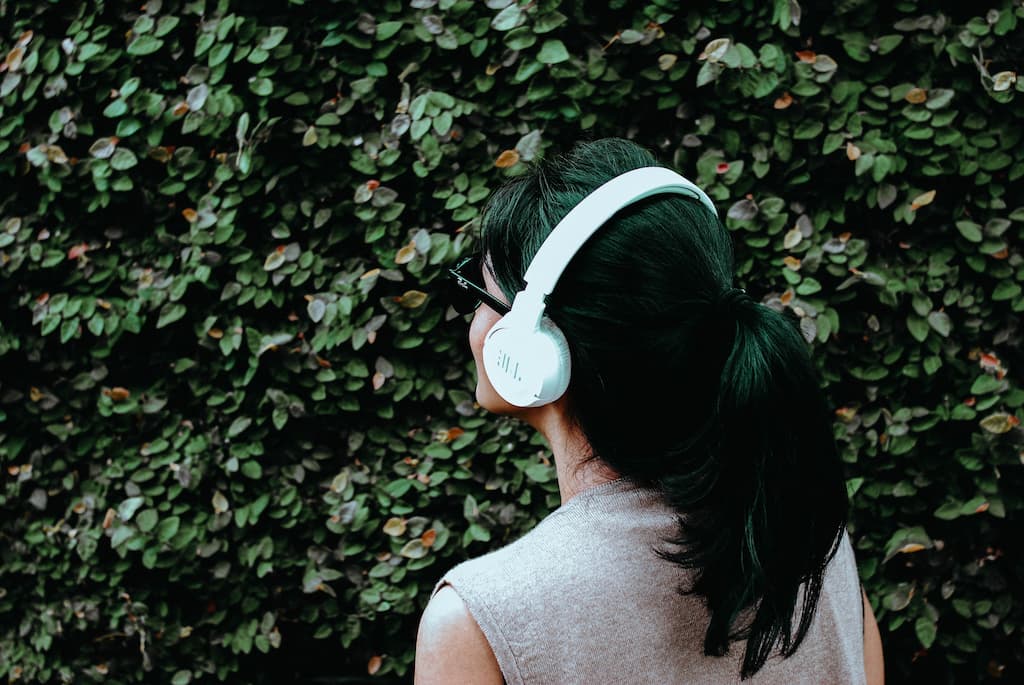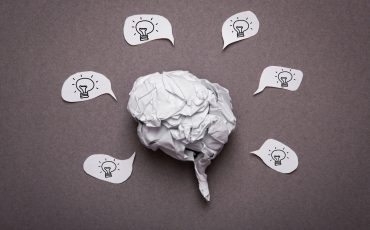Meditation, Music & Sleep

Content
Calming music or the sounds are usually a part of what we imagine whenever someone mentions meditation. An ambience with subtle nature sounds, candles and a cross-legged sitting maybe?
Music may or may not be part of a meditation. Should you include sounds to your meditation? If yes, which kinds of? What is the relationship of music with our sleeping cycle and meditation? Let’s discover together!
Meditation With or Without Music?
The answer is : There is no correct answer. However both in traditional and modern approaches sound has a place in meditative practices. If you know what are the effects, benefits and when to use any music or sound, you can build your own practice around it.
Meditation is known to have effects on our nervous system and hormones. First of all, what we call a “meditative state” has a physiology of its own. Mindfulness practices such as following your breath or focusing on any object to disassociate from the activity of thinking changes the brainwave frequencies in a certain way. Central nervous system gets into the parasympathetic mode where we can build new neural pathways, we can reconnect to our emotions and feel safe. This shifts the activated brain parts map to a different one than in our daily life. As a result, hormones related to this state may be released like oxytocin or serotonin. Music may help us induce this physiologic image. Also it may contribute to creating the necessary headspace through various ways:
- Music as a Relaxer
- Music as a Tuner (Frequency Changer)
- Music as a Healer
- Music as an Anchor

Meditative and Sleep States
In a meditative state, we know that our brainwaves transits to “Alpha” frequencies which are associated with relaxation, calmness and reconstruction of the brain. In daily life, when the mind is active and alert the brain usually operates in “Beta” frequencies. Those are the waves we emit when we engage in activities like problem solving, critical thinking and memorization. Waves are named in the Greek letters such as Alpha, Beta, Delta and so on according to wavelengths of electromagnetic waves corresponding to different modes of operation of our brains. Sensory inputs like sound or tactility might change the brainwaves and trigger different modes.
Alongside those waking states, there are Delta and Theta brainwaves that are mostly associated with sleeping states. Our brain displays Delta waves that are associated with deep sleep and relaxation whereas Theta waves are linked to REM sleep, dreaming, as well as deeply meditative and creative states. Remember how creative you can get when you are dreaming. Or else, you may have heard that we process the information we learned during sleep. Moreover, the quality of sleep is usually measured with the ability and capacity to get into the REM sleep cycles. You may have experienced the nights when you have slept a lot but didn’t feel like you got a good rest. In those times usually we can not go into deep resting cycles, in other words our sleep is very “light” and mostly interrupted.
In Shamanic sounds, Theta frequency range has a special importance. Shamanic drums are attuned into Theta frequencies. The function of Shamanic drum is to provide a trigger to get into deep meditations or to provide an attachment to the moment. Shamans use different rhythms to call the participants back out of the meditation. This means changing the sound to a more awakening tone!
Music as a Relaxer

First way to use music in your meditation is to use it as a support mechanism to calm down your body and build the base for your practice. Either to sleep or to meditate, a tranquil state and getting away from the busy mind could make your life easier. Certain sounds may facilitate relaxation and meditativeness for us.
Honestly, what makes a person feel relaxed may surprisingly vary. There are people who feel calm and peaceful while listening to metal music. For another, a classical symphony may be too bouncing or nature sounds like rain may be distracting. So, it takes a little experiment with yourself to find what type of music or sounds can relax your system. Here are some of the alternatives that might help you:
- Nature Sounds : You can easily find nature sounds on music platforms you use or on the websites. You may prefer using specific sounds like “Bird Sounds” or “Ocean Sounds”. Otherwise you may use tracks as “Forest Sounds” that may include every sound of a forest like hissing of the trees or animal sounds. Mimicking the ambience of a natural habitat might calm down your nervous system. All those sounds both stimulate our senses in a natural way and it might send the message that you are “home”.
- “Noise”s : You may have seen tracks like “Ambient Noise” or “White Noise”. Those are a combination of background noises. In our daily life everything that vibrates from the lowest level to the highest has a sound. Some of them we do not even realize, or we filter them out. However, they all together have a background noise that our brain usually offset our normal hearing to. Noise tracks provide those sound combinations in different frequency ranges or dynamics. Most people find them useful for concentration, relaxation or to sleep. There are various types of noises such as Pink Noise, White Noise or Brown Noise. You might give them a shot and see if they would work for relaxing your system!
- Bowl Sounds : You may have run into Tibetan Bowls in yoga studios. Metal or crystal bowls that are set to vibrate in certain frequencies are designed specifically for meditative purposes. In ancient teachings like Qi Gong, Yoga or Tantra some sounds and tunes are peculiar to chakras or they resemble the frequency of the universe.
Since these sounds are very steady and singular, they are very beneficial to focus.
- Hang Drum: Hang drum, hand pan or tongue drum… There are different names of different variations but these little instruments played by hand have mystical and magical sounds that might relax you instantly. Check out tracks or sessions recorded with them and see if you’d like to use it for your meditations!
- Solo Instrument Tracks : Violin tracks or calm piano tracks might be good choices as well. Single instruments or movie soundtracks might work for you in that sense. To unwind and relax, these tracks should be non-distracting. Other instruments you can go for might be Kora, Guitar or Santoor.
Music as a Tuner

For a moment, imagine your body as a musical instrument. Like a guitar or a piano so to speak. Every note on instruments has a certain universal frequency. Wherever you go, “E” note has the same tone measured in frequency unit “Hz”. The musicians should tune their instrument to the universal notes to be able to speak the common music language.
Likewise, the different waves of the brain I mentioned earlier have certain frequency values as well. Of course hearing delta waves does not mean that you certainly go in a delta state. However, listening to sounds at a certain frequency may work like tuning forks for our brain. Being exposed to that specific frequency for a while may induce similar waves by “attuning” our brain. The boundaries might differ slightly, but you can take these frequency ranges as a reference:
- Alpha (8–12 Hz) : Relaxation, mindfulness, meditation, cultivation of new habits and rewiring the brain
- Beta (12-30 Hz) : Daily activity, critical thinking state, alert and conscious
- Theta (3-8 Hz) : REM Sleep, meditation, creativity, dreaming
- Delta: 0.5-3 Hz : Deep sleep, completely relaxed body and reduced physical awareness
Music as an Anchor
Most of the meditation techniques work with an object of attention to stay present. That object is usually our breath or the physical senses. Whenever we drift back to brain activity and start thinking thoughts we direct our focus back to the object as an anchor to the present moment.
The sense of hearing might be used as an anchor as well. If you enjoy using your hearing sense in a meditation context or if you feel like it would work for you should give it a try! Do not forget, the practice is to guide your attention towards whatever you are listening to at the present moment. There are a couple of points to pay attention to when choosing the music:

- Music should not distract you. Remember, you will root yourself to the practice with the sound. So regardless of any rules, find what works best to call you back to the “now”.
- Be aware of your sensory limits. Everyone has different tolerance and sensitivity towards senses. You may be too sensitive to smells that it might be impossible for you to handle a fragrance or you may differentiate a spice in a dish within seconds while some people do not even realize it. Same goes for the hearing. If you are too sensitive with your hearing sense any sound or music might be distracting for you. You may consider not using sounds at all or use very subtle sounds.
Some ideas for anchoring sounds may be:
- Single Frequency Gongs or Singing Bowl sounds
- Nature sounds: Animals, forest, ocean or birds… You should choose a combination that is steady yet not sleepy.
Last Note: Did you know about Meditopia’s music section? There are lots of special music that are carefully and delicately produced for your meditations. My favorite is the sounds of the chakras series and planets series! Give them a chance even only to listen and smile !
How do you feel about including music to your meditations? Do you make use of any sounds for getting to sleep easily or to meditate? Feel free to share your ideas in the comments with us!




